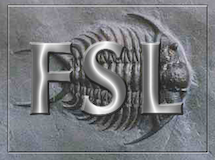|
Size: 624
Comment:
|
Size: 637
Comment:
|
| Deletions are marked like this. | Additions are marked like this. |
| Line 4: | Line 4: |
| Before calling the FEAT GUI, you need to prepare each session's data as a 4D NIFTI or Analyze format image; there are utilities in fsl/bin called fslmerge and fslsplit to convert between multiple 3D images and a single 4D (3D+time) image. If the data requires any scanner-specific corrections (for example, for artefacts such as slice dropouts), this should be applied to the data before running [[FEAT]]. | Before calling the FEAT GUI, you need to prepare each session's data as a 4D NIFTI or Analyze format image; there are utilities in fsl/bin called [[FslUtils|fslmerge and fslsplit]] to convert between multiple 3D images and a single 4D (3D+time) image. If the data requires any scanner-specific corrections (for example, for artefacts such as slice dropouts), this should be applied to the data before running [[FEAT]]. |
Contents
- Introduction
- User Guide
Contents
- FAQ
Before Running FEAT
Before calling the FEAT GUI, you need to prepare each session's data as a 4D NIFTI or Analyze format image; there are utilities in fsl/bin called fslmerge and fslsplit to convert between multiple 3D images and a single 4D (3D+time) image. If the data requires any scanner-specific corrections (for example, for artefacts such as slice dropouts), this should be applied to the data before running FEAT.
Structural images for use as "highres" images in registration should normally be brain-extracted using BET before being used by FEAT.
